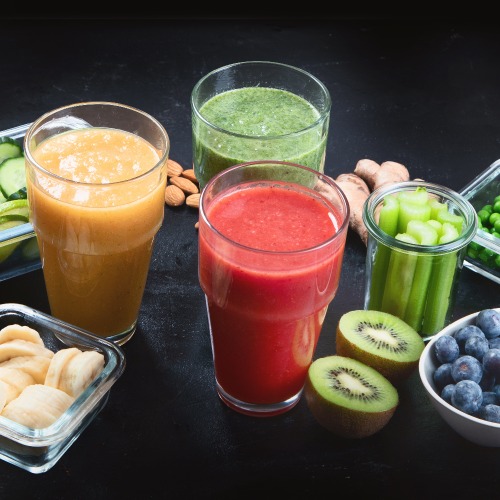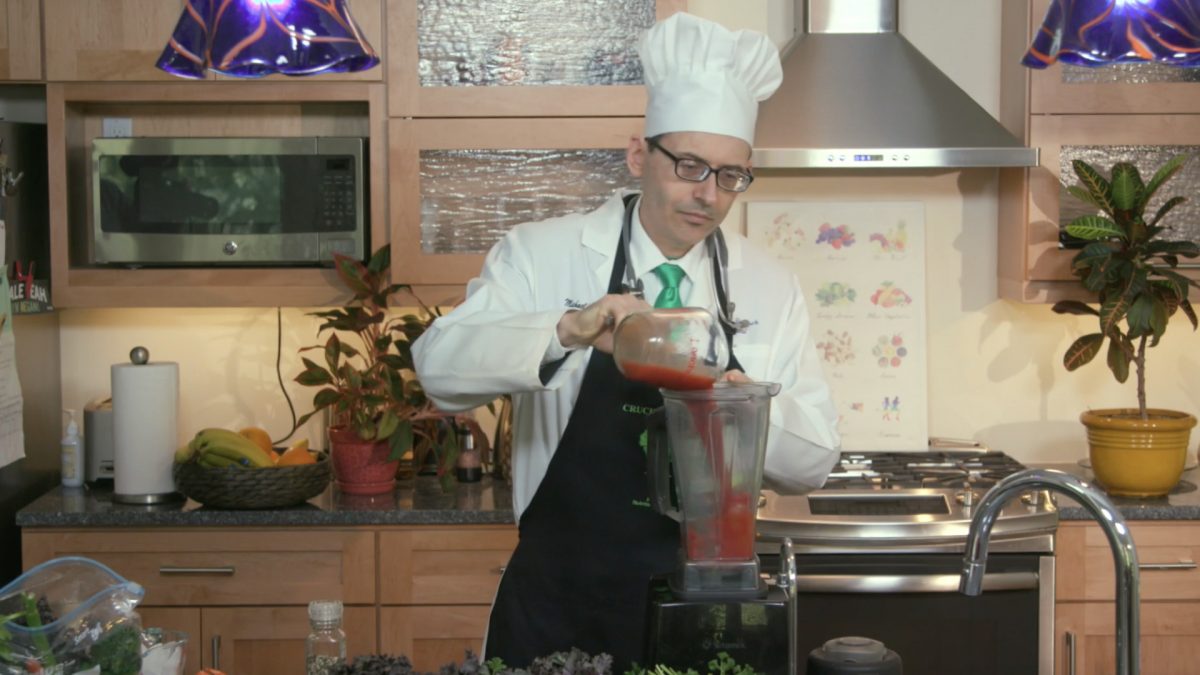
Smoothies
How else can we maximize health benefits of smoothies? Let’s look at greens, one of the healthiest foods on the planet. I’ve always said that the best way to get your greens in is whichever way you’ll eat the most of them.
I remember the first time I sipped a green smoothie. I was speaking somewhere in Michigan, hosted by a darling physician couple. They told me they drank “blended salads” for breakfast. Intellectually, I loved the idea. Greens in convenient liquid form? I envisioned myself drinking a salad on my way to work every day. But then I tasted it. It felt like I was drinking someone’s lawn.
If you’re like me, you may need to build up to green smoothies. Pretty much everyone loves fruit smoothies. A frozen banana, berries, some apple—delicious. But, if you add a handful of baby spinach, you may hardly even taste the greens. Over time, as you add more and more greens, your taste buds can adapt.
Another superfood I incorporate into my smoothies? Flaxseeds. Not only are they so remarkable they are their own category in my Daily Dozen, they have a wonderful binding quality that makes them a great addition, so toss a tablespoon into the blender for thick, milkshake-like smoothies. (They’ve also been found to significantly suppress appetite and calorie intake!) One more way to help boost the antioxidant content of your smoothie is adding a teaspoon or so of amla, dried Indian gooseberries.
Smoothies offer a convenient way to boost both the quantity and quality of fruit and vegetable intake by reducing food particle size to help maximize nutrient absorption. It’s important, however, to use whole fruits and veggies rather than just their juice. Why? Because, when we juice, we lose the fiber and all the phytonutrients bound to it.
Two things to keep in mind when it comes to smoothies are speed of consumption and your tooth enamel. It’s been shown that you can drink fruits and vegetables in smoothie form at about two cups per minute, which is ten times faster than what it may take to eat them in solid form. Since liquid calories can be consumed so quickly, they have the ability to undermine our body’s capacity to regulate food intake, so sip smoothies slowly rather than gulping them down so our brain and body can be in sync as to how full we are. And our enamel? If you add lemon or other acidic fruits or vegetables to your smoothie, the enamel on your teeth may soften temporarily. So, if you’re about to enjoy a sour smoothie, drinking through a straw, avoiding swishing the smoothie in your mouth, and rinsing your mouth with water after drinking a sour smoothie may assist in reducing tooth enamel erosion.
For substantiation of any statements of fact from the peer-reviewed medical literature, please see the associated videos below.
Popular Videos for Smoothies


Juicing Removes More than Just Fiber
The majority of polyphenol phytonutrients may be bound to fiber, helping to explain the marked...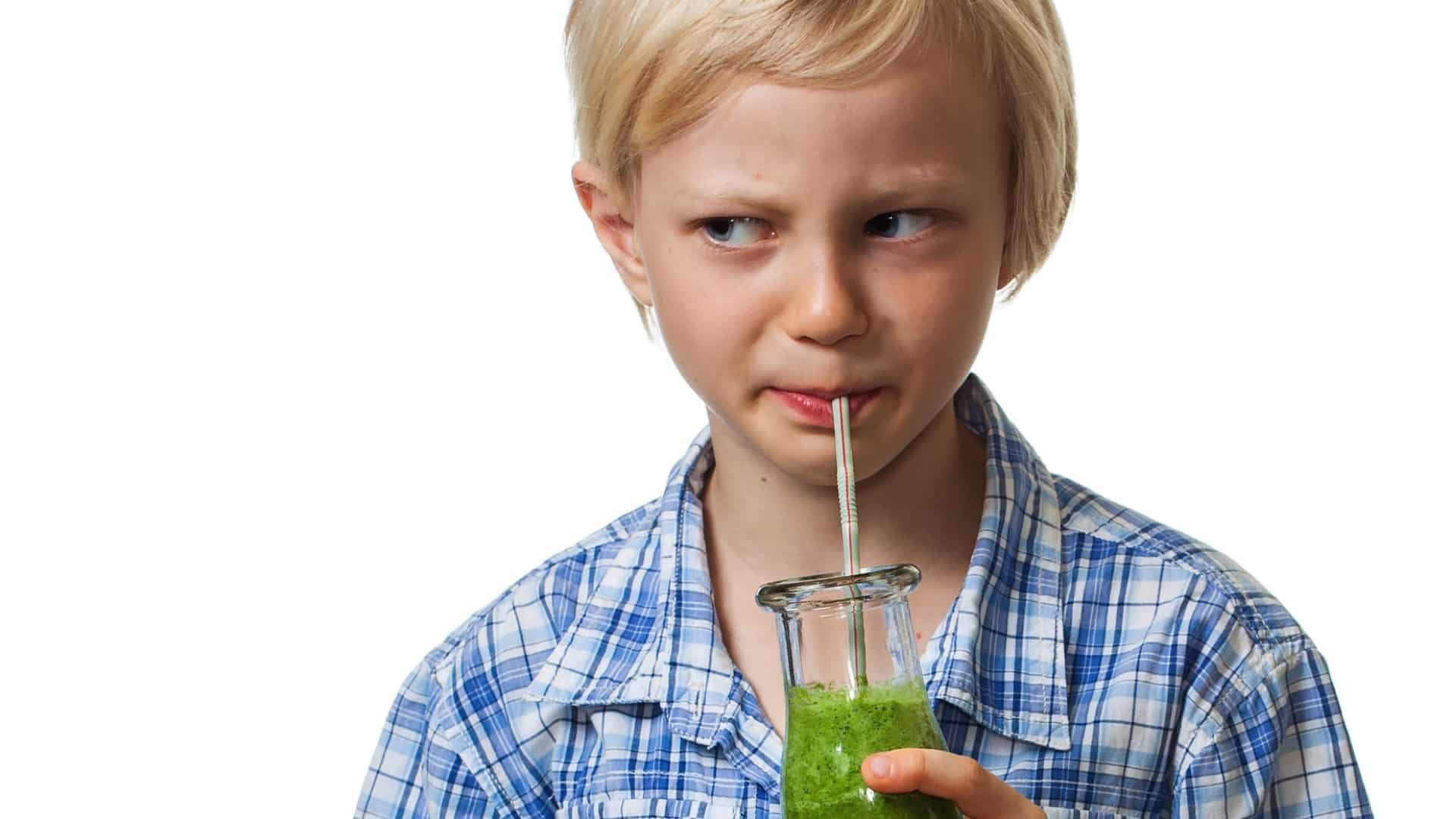
Are Green Smoothies Good for You?
Smoothies (and blended soups and sauces) offer a convenient way to boost both the quantity...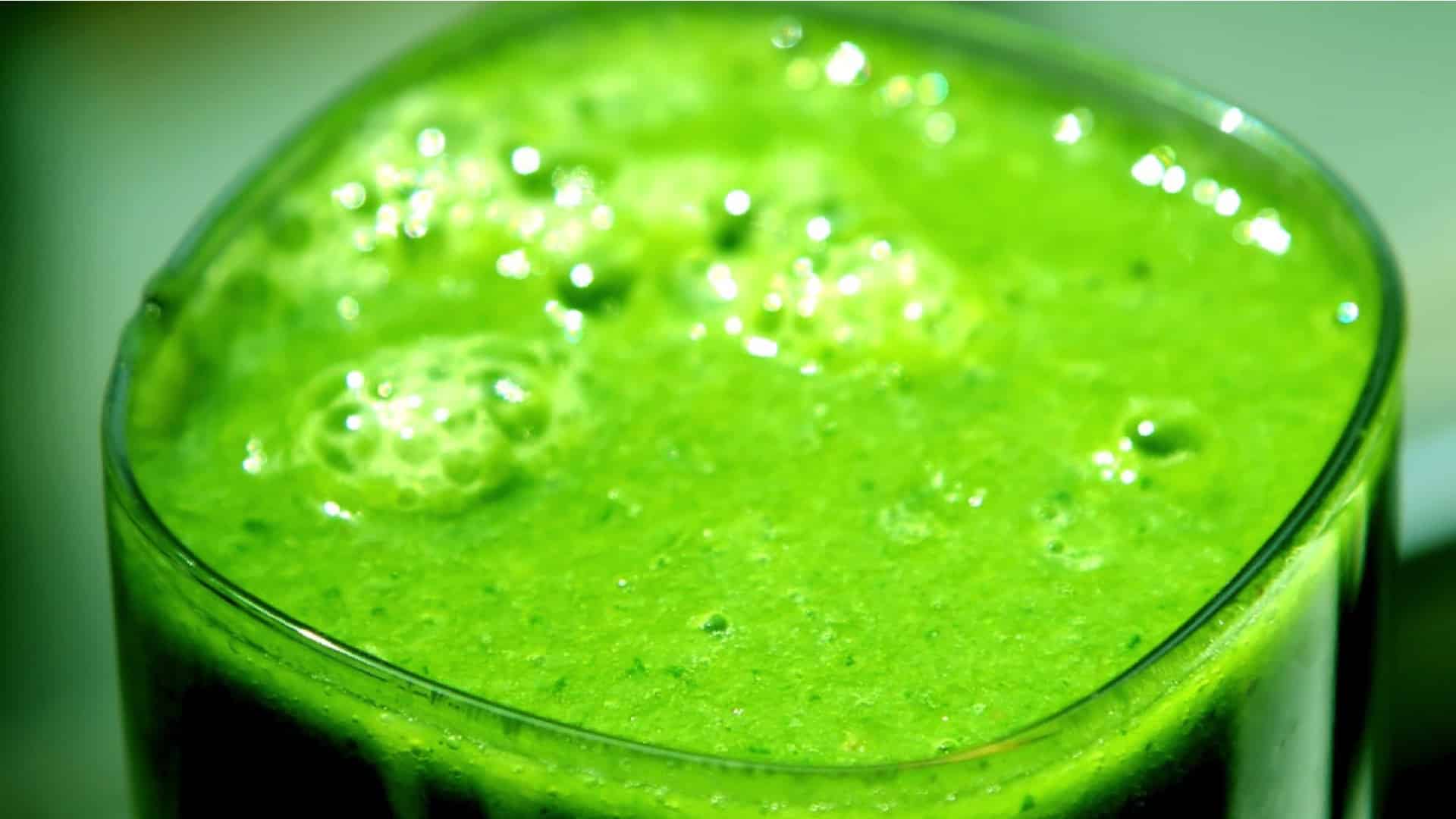
Are Green Smoothies Bad for You?
Eating intact grains, beans, and nuts (as opposed to bread, hummus, and nut butters) may...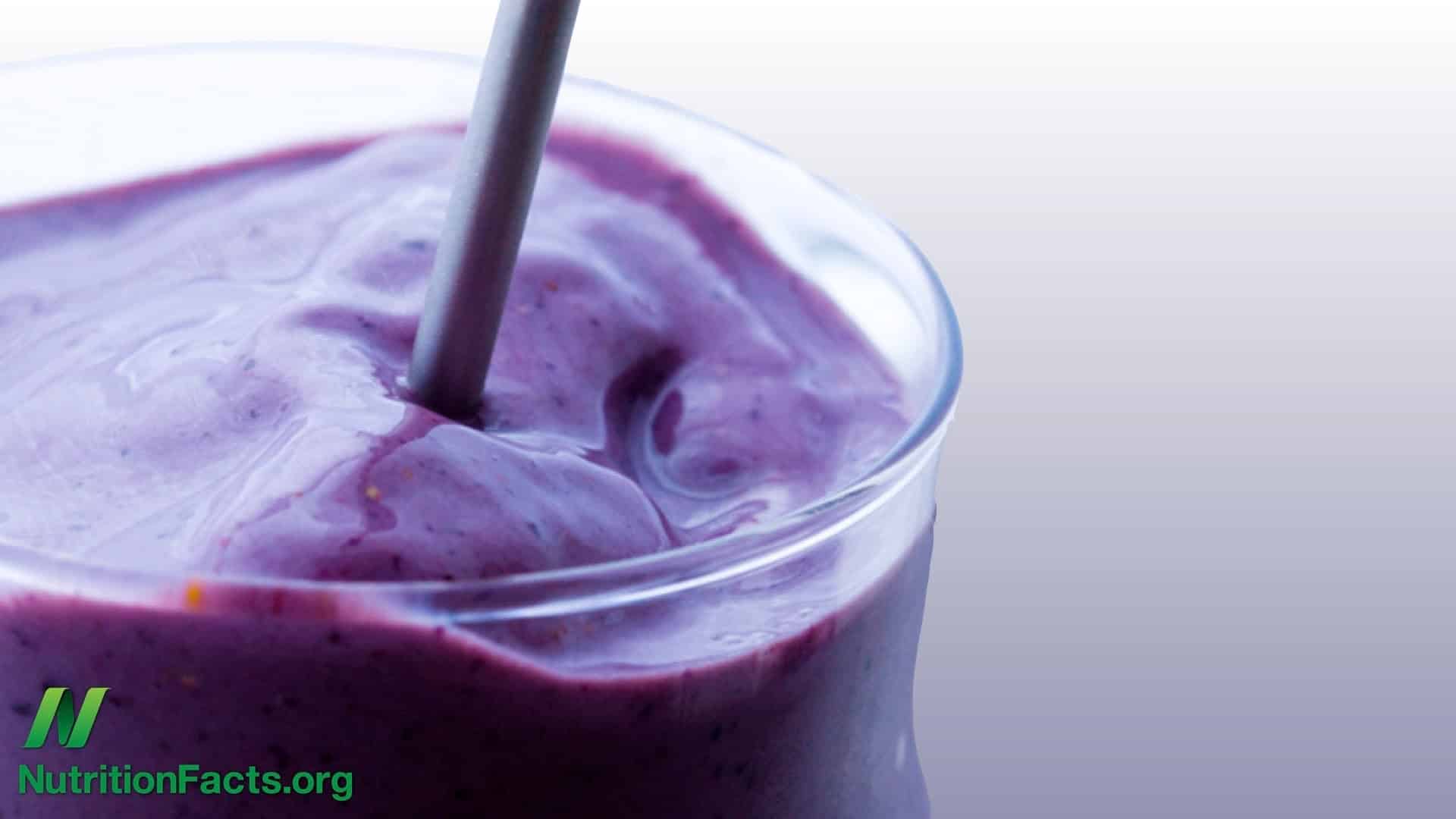
A Better Breakfast
The antioxidant power of American breakfast fare is compared to a smoothie that contains berries,...
Green Smoothies: What Does the Science Say?
Might disrupting the fiber by blending fruit result in overly rapid sugar absorption?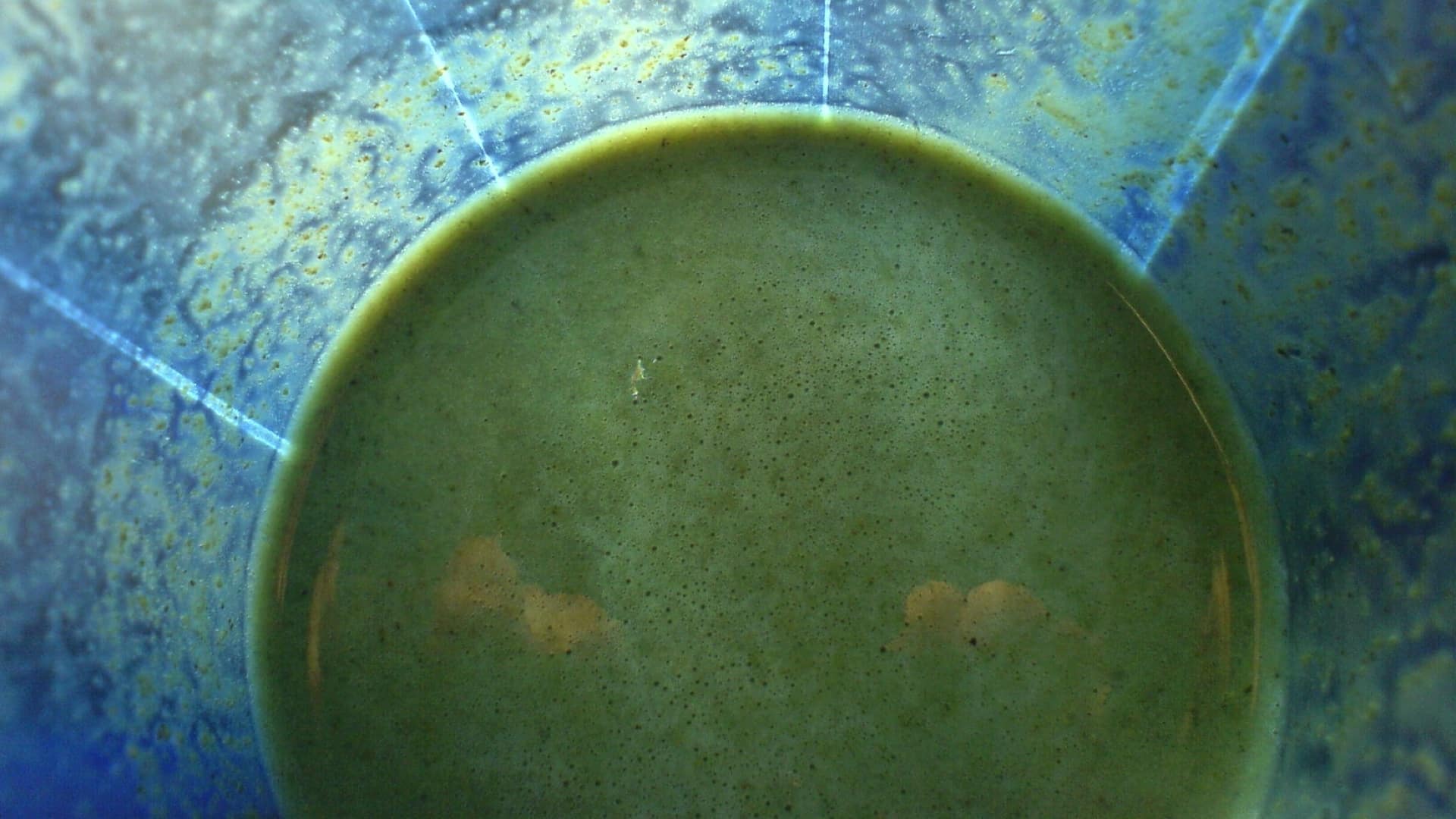
The Downside of Green Smoothies
Concerns about smoothies and oxalic acid, nitrate availability, dental erosion, and weight gain are addressed.All Videos for Smoothies
-

Banana vs. Mango Smoothies for Polyphenol Absorption
How can you mediate the phytonutrient-destroying enzyme in avocados, bananas, and mushrooms?
-

The Downside to Banana Smoothies for Polyphenol Absorption
An enzyme in bananas can destroy some of the phytonutrients in berries and cocoa, but there is a way to reduce the effect.
-

Fecal Transplants for Aging and Weight Loss
Does poop from centenarians have anti-aging properties?
-

Berries for Inflammation and Osteoarthritis Treatment
Double-blind, randomized, placebo-controlled trials on berries and the first clinical study on the effects of berries on arthritis.
-

Oxalates in Spinach and Kidney Stones: Should We Be Concerned?
Even though dietary oxalates may have a limited effect on kidney stone risk in most people, there are some predisposing factors that can put anyone at risk.
-

Best Brain Foods: Berries and Nuts Put to the Test
Randomized controlled studies put nuts, berries, and grape juice to the test for cognitive function.
-

Benefits of Blueberries for Blood Pressure May Be Blocked by Yogurt
What happened when researchers tried to tease out what’s in dairy that interferes with the health benefits of berries and tea?
-

Dr. Greger in the Kitchen: My New Favorite Beverage
Dr. Greger blends up a vegetable smoothie inspired by a recipe in his How Not to Die Cookbook.
-

The Benefits of Açai vs. Blueberries for Artery Function
What are the effects of açai berries, cooked and raw blueberries, grapes, cocoa, green tea, and freshly squeezed orange juice on artery function?
-

The Antioxidant Effects of Açai vs. Apples
Açaí berries are touted for their antioxidant power, but does that translate into increased antioxidant capacity of your bloodstream when you eat them?
-

Is It Better to Advise More Plants or Less Junk?
It may be more expedient politically to promote an increase in consumption of healthy items rather than a decrease in consumption of unhealthy items, but it may be far less effective.
-

Chocolate and Stroke Risk
Dark chocolate is pitted against milk chocolate in a test of artery function.
-

Should We All Take Aspirin to Prevent Cancer?
The aspirin compounds naturally found in plant foods may help explain the lower cancer rates among those eating plant-based diets.
-

Lead Contamination of Tea
How much green, white, black, and oolong tea can we consume before the benefits of tea start to be countered by the risks of lead contamination for children, pregnant women, and adults in general?
-

The Downside of Green Smoothies
Concerns about smoothies and oxalic acid, nitrate availability, dental erosion, and weight gain are addressed.
-

Liquid Calories: Do Smoothies Lead to Weight Gain?
If our body doesn’t register liquid calories as well, why are blended soups more satiating than the same ingredients eaten in solid form?
-

Green Smoothies: What Does the Science Say?
Might disrupting the fiber by blending fruit result in overly rapid sugar absorption?
-

Are Green Smoothies Bad for You?
Eating intact grains, beans, and nuts (as opposed to bread, hummus, and nut butters) may have certain advantages for our gut flora and blood sugar control, raising questions about blending fruits and vegetables.
-

Are Green Smoothies Good for You?
Smoothies (and blended soups and sauces) offer a convenient way to boost both the quantity and quality of fruit and vegetable intake by reducing food particle size to help maximize nutrient absorption.
-

Peppermint Oil for Irritable Bowel Syndrome
Peppermint essential oil should be considered the first-line treatment for IBS.
-

Juicing Removes More than Just Fiber
The majority of polyphenol phytonutrients may be bound to fiber, helping to explain the marked difference in health impacts between whole fruit and fruit juice.
-

Testing the Dietary Compensation Theory
An elegant study is presented, testing the appetite-suppressing effects of walnuts.
-

A Treatment for Chronic Fatigue Syndrome
An industry-funded, randomized, double blind, placebo-controlled crossover trial study suggests chocolate may improve symptoms for those suffering from chronic fatigue syndrome—a debilitating condition currently affecting as many as seven million Americans. But how do you get the cacao phytonutrients without the saturated fat and added sugar?
-

Amla & Triphala Tested for Metals
Both U.S.-made and imported Ayurvedic dietary supplements have high contamination rates of toxic metals such as mercury—though only a small fraction of the levels found in canned tuna.
-

A Better Breakfast
The antioxidant power of American breakfast fare is compared to a smoothie that contains berries, white tea leaves, and Indian gooseberry (amla) powder.
